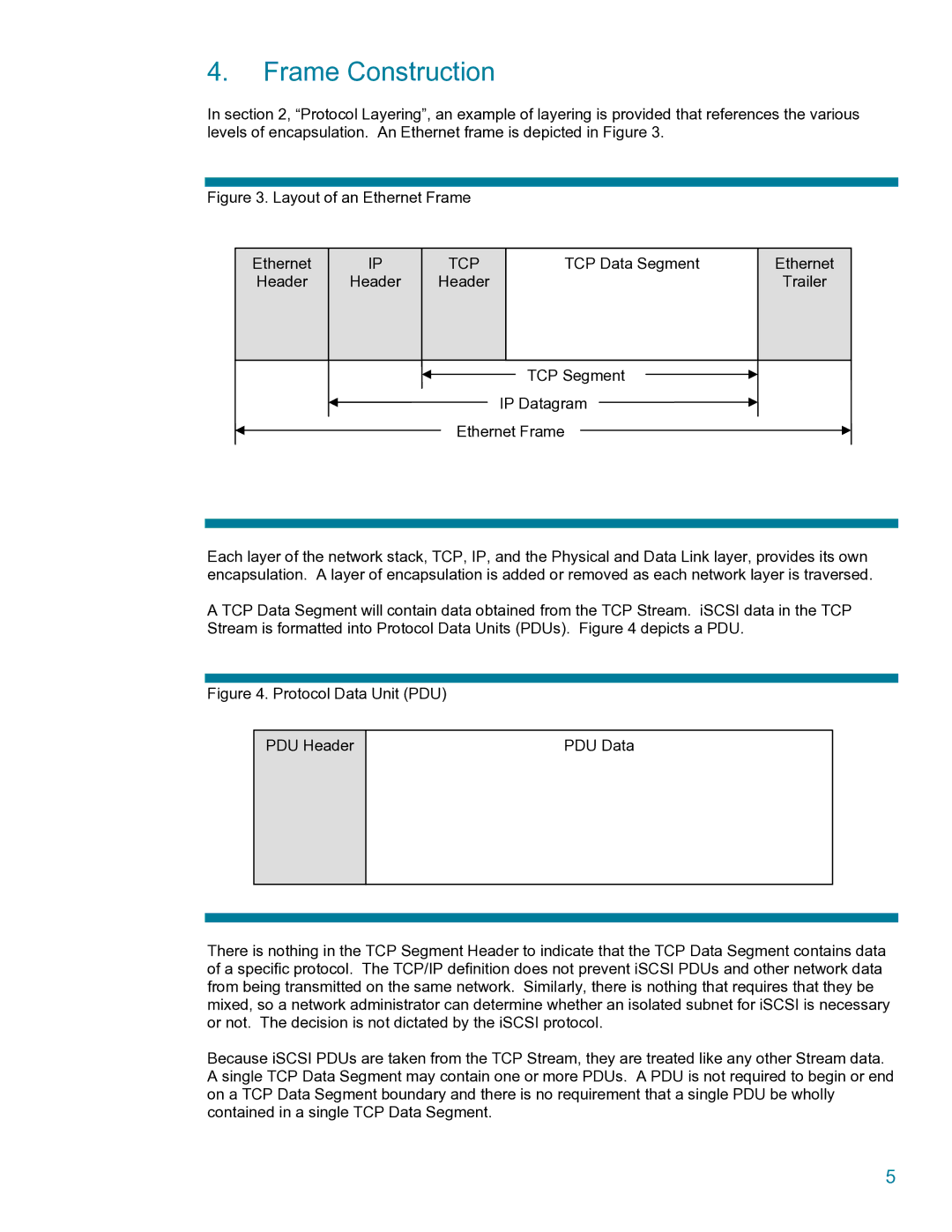
4.Frame Construction
In section 2, “Protocol Layering”, an example of layering is provided that references the various levels of encapsulation. An Ethernet frame is depicted in Figure 3.
Figure 3. Layout of an Ethernet Frame
Ethernet
Header
IP
Header
TCP | TCP Data Segment |
Header
TCP Segment |
IP Datagram
Ethernet Frame
Ethernet
Trailer
Each layer of the network stack, TCP, IP, and the Physical and Data Link layer, provides its own encapsulation. A layer of encapsulation is added or removed as each network layer is traversed.
A TCP Data Segment will contain data obtained from the TCP Stream. iSCSI data in the TCP Stream is formatted into Protocol Data Units (PDUs). Figure 4 depicts a PDU.
Figure 4. Protocol Data Unit (PDU)
PDU Header
PDU Data
There is nothing in the TCP Segment Header to indicate that the TCP Data Segment contains data of a specific protocol. The TCP/IP definition does not prevent iSCSI PDUs and other network data from being transmitted on the same network. Similarly, there is nothing that requires that they be mixed, so a network administrator can determine whether an isolated subnet for iSCSI is necessary or not. The decision is not dictated by the iSCSI protocol.
Because iSCSI PDUs are taken from the TCP Stream, they are treated like any other Stream data. A single TCP Data Segment may contain one or more PDUs. A PDU is not required to begin or end on a TCP Data Segment boundary and there is no requirement that a single PDU be wholly contained in a single TCP Data Segment.
5
